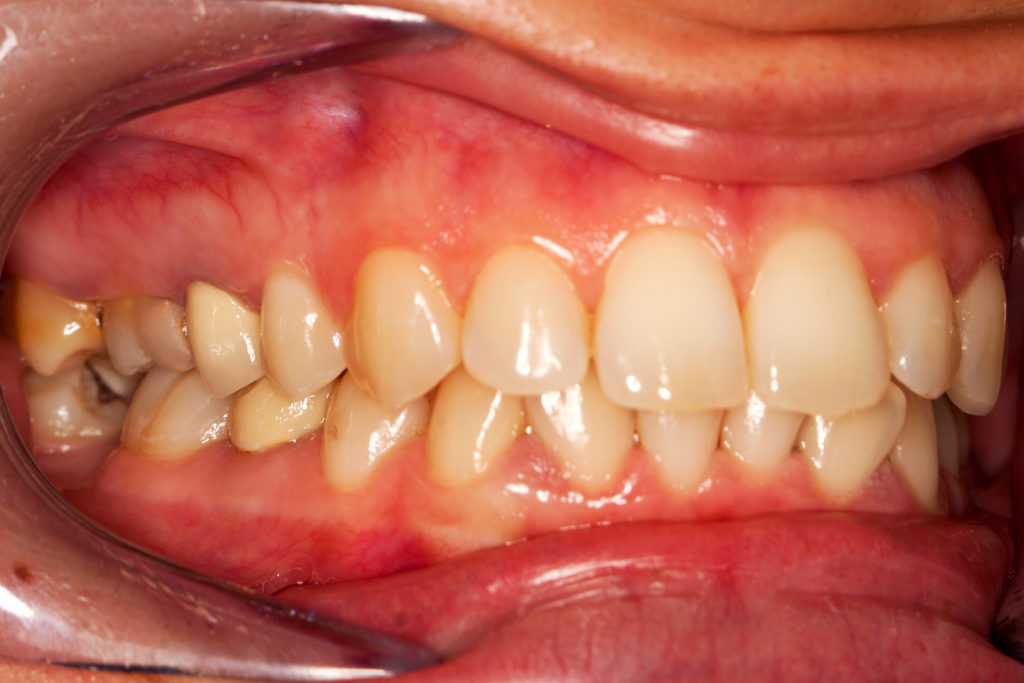
Periodontal disease, or gum disease, is an infection in the gum tissue caused by poor oral hygiene. When left untreated, it can lead to deterioration of the jawbone and eventually tooth loss. There are several early warning signs of gum disease. Knowing what to watch for is the key to ensuring you help keep your teeth and gums healthy and on track before it’s too late.
What is Gingivitis?
Gingivitis is the first stage of gum disease. It takes hold of your gums when plaque builds up on your teeth, irritating your gums and causing them to become inflamed. The most common cause of gingivitis is poor oral hygiene that encourages plaque to form on the teeth, causing inflammation of the surrounding gum tissue.
Plaque can lead to gingivitis by:
- Plaque forms on your teeth. Because of the bacteria that form on your teeth, when starches and sugars in foods interact with bacteria usually found in your mouth, it causes plaque. Plaque requires daily removal because it reforms so quickly.
- Plaque turns to tartar. Plaque that stays on your teeth can harden under your gumline into tartar which collects bacteria. Tartar makes plaque more difficult to remove and requires professional dental cleanings to remove tartar completely.
- Gingiva becomes inflamed. The longer that plaque and tartar remain on your teeth, the more they irritate the part of your gum around the base of your teeth, called gingiva, leading to inflammation.
Warning Signs of Gingivitis
Healthy gums should be firm and pink in color. If you notice any of the symptoms below, contact your dentist right away:
- Swollen gum tissue
- Soft and puffy in appearance
- Receding gums that look to be pulling away from your teeth
- Dusky red or purple instead of light pink
- Bleeding, especially after you brush or floss
- Persistent bad breath
If caught early enough, gingivitis can be corrected with better oral hygiene techniques, including brushing and flossing.
Preventing Gum Disease From the Start
If you have a history of periodontal disease in your family, prevention might feel hopeless as this is a genetic disease. But if you spend just a few minutes considering your gums each day, you really can help keep gum disease from returning, or perhaps from appearing in the first place.
Incorporating these healthy habits into your life for a disease-free smile:
Brush Regularly
Brushing your teeth at least twice a day for a full two minutes is essential in making sure you’re getting a proper clean every time. The primary cause of gum infection and inflammation is plaque buildup. If you brush often and well, you can avoid that at home by making sure you’re brushing correctly and that you’re never skipping brushing your teeth.
Floss Daily
Did you know that you should be flossing your teeth once a day? Many patients don’t floss regularly. Flossing can often feel like an extra annoyance, but it does make a difference, which is why your dentist is constantly reminding you to floss! Floss reaches areas of your teeth up against your gum line that a toothbrush can’t always reach. Flossing also helps to strengthen your gums which makes them more resistant to inflammation.
Familiarize Yourself With Indications of Gingivitis
Knowing the early symptoms of gingivitis will help you understand when it’s time to schedule an appointment if you see something that doesn’t appear normal. Be on the lookout for bleeding gums, dark red or purple, tender, receding, puffy, or otherwise different from their normal pink appearance.
How Regular Dental Exams Can Help
Visiting your dentist regularly every six months is one of the best ways to keep track of the healthy state of your mouth. If you have a history of gum disease, making appointments more often than six months could help keep gum disease at bay with an extra set of eyes checking your gums for signs and symptoms, so nothing is missed.
Make an appointment with Hinsdale Dentistry today if you are experiencing any of the signs or symptoms of Gingivitis.